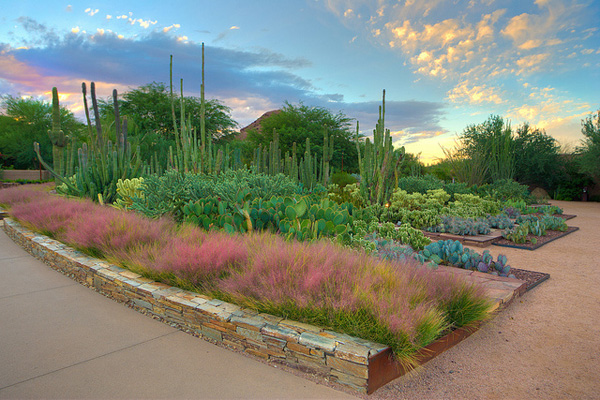
Even those with a green thumb can struggle to keep their plants healthy when Phoenix’s summer rolls in. To shed some light on ways to maintain your garden in the heat, AFM talked with Noelle Johnson, horticulturist and field expert for Birds & Blooms Magazine.
AFM: Arizona is known for its extreme temperatures. Are there specific times of year that are the best to plant during to ensure the plants’ survival during the summer months?
NJ: The best time of year to add new plants in Arizona landscapes is during the fall months. The reason for this is that the cooler temperatures give plants a chance to develop their roots before the stress that hot summers bring. A well-developed root system is often the deciding factor as to whether or not a new plant will make it. The exception is with frost-tender plants such as bougainvillea and lantana, which do best when planted in spring, once the danger of frost has passed.
AFM: Are there certain areas and types of terrain that gardeners should look for when planting? Rocky areas, shaded areas, flat areas, etc.?
NJ: The most difficult spot to grow plants in Arizona are in areas that receive full, afternoon sun—most plants do best when planted in east-, north- or south-facing exposures. For areas that get hot afternoon sun, select plants that are native to the Southwest, which are adapted to the extreme sun and heat. Much of the terrain in Arizona is made up of rocky or clay soils. Most native and arid-adapted plants do best in well-drained soil. Mixing compost to existing soil at the time of planting, at a ratio of one part compost to one part native soil, will improve drainage.
AFM: How often should gardeners water their plants, and for how long (seconds, minutes, etc.)? Is a “deep water” better than a shallow water, and if so, how can that be accomplished?
NJ: The frequency of watering changes with the seasons—plants need more water in summer and much less in winter. In general, shrubs/ground covers should be watered every five days in summer, every 10 days in winter and every seven days in spring/fall (for desert adapted plants, you can space out watering even further). Plants should be watered deeply, which promotes the roots to grow deep into the soil where it is cooler, holds onto moisture longer and helps to flush away the salts that accumulate around the root zone - this can take up to two hours depending on the irrigation system, soil, water pressure, etc. The length of time that you water is determined by how long it takes for water to reach the desired depth, which is twotothree feet for trees, 18 inchesto two feet for shrubs and one foot for ground covers. You can test the depth of watering by sticking a long screwdriver or a piece of rebar into the soil after watering. It will penetrate the soil to the depth that the water has reached. Adjust the length of time of water as needed to achieve the desired depth—once you have determined the length of time to water your plants, you won't have to change it—only the frequency of watering will change with the seasons. Shallow watering keeps roots near the surface, which dries out quickly and where soil temperatures get very hot, which stresses plants. Shallow water evaporates quickly, leaving salts behind that resemble white powder that can adversely affect plants. The most efficient method for watering plants is via drip irrigation, which slowly releases water, allowing it to permeate the soil without running off. Soaker hoses can also be used to water plants. Watering plants using a hose can be inefficient since much of the water is lost to runoff and doesn't penetrate the soil deeply enough. If using a hose to water plants, turn it on to a slow trickle and allow it to soak into the soil, which can take up to an hour.
AFM: Can plants be over-watered in the summer? If so, how can you tell that one has been over-watered?
NJ: Often, there are more problems due to over-watering than under-watering—even in the desert. Signs of over-watering is soil that is constantly moist and never dries out, young leaves that are yellow or light green, and the younger parts of the plant are wilting.
